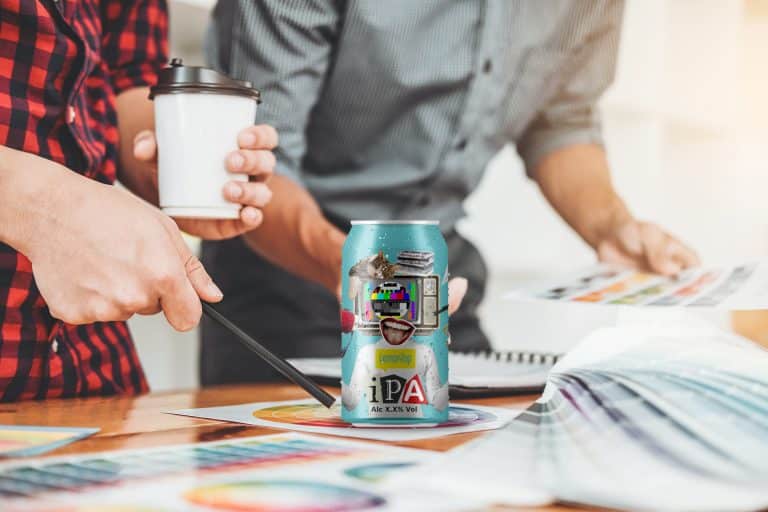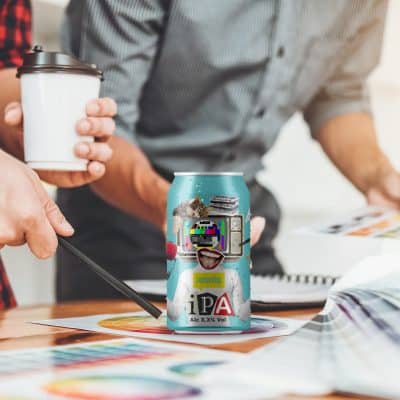Breweries around the globe are embracing creativity in beer labelling like never before, using their labels as a canvas to create truly eye-catching and memorable designs. Gone are the days of plain and generic labels – today, it’s all about standing out from the crowd. From intricate illustrations to bold typography, breweries are pushing the boundaries of traditional beer branding, captivating consumers with their artistic expression. In this article, we will delve into the fascinating world of beer labelling, exploring how breweries are harnessing the power of creativity to not only attract attention but also tell their unique stories. So, grab a cold one, sit back, and prepare to be inspired by the artistry behind your favourite brews.
The Importance Labelling
Beer labelling is more than just a pretty design on a bottle. It serves as a crucial point of connection between breweries and consumers. In a saturated market, where beer options seem endless, a well-designed label can make all the difference. It has the power to grab attention, evoke emotions, and convey the essence of the beer within. A label can communicate the brewery’s personality, values, and story, giving consumers a glimpse into what makes the beer special. It’s a powerful marketing tool that can create a lasting impression and build brand loyalty.
Beer labelling also plays a practical role in the beer industry. It provides important information such as the beer’s name, style, alcohol content, ingredients, and brewery details. Additionally, it helps consumers differentiate between different beers on the shelf, making it easier for them to make a purchasing decision. With so many beers to choose from, a well-designed label can act as a beacon, guiding consumers towards their preferred brew.
The evolution of creativity in beer labelling has mirrored the changing tastes and preferences of consumers. From straightforward designs in the early days of brewing to the elaborate and artistic labels we see today, beer labelling has come a long way. Let’s explore how beer labelling has evolved over the years.
The Evolution of Beer Labelling
Beer labelling has a rich history that dates back centuries. In the early days, labels were simple and utilitarian, primarily serving as a means to identify the contents of the bottle. These labels often featured basic text, such as the brewery’s name and the type of beer. As the brewing industry grew and competition increased, breweries started to recognise the importance of standing out and attracting consumers with their labels.
In the late 19th century, advancements in printing technology allowed for more intricate and visually appealing labels. Brewers began incorporating illustrations and decorative elements into their labels, capturing the attention of consumers. These labels often depicted scenes related to the brewery’s history or the beer’s ingredients, adding a layer of storytelling to the packaging. As the craft beer movement gained momentum in the late 20th century, breweries started to experiment even further with their labels, pushing the boundaries of traditional beer branding.
Today, beer labels have become miniature works of art, showcasing the creativity and personality of the brewery. From hand-drawn illustrations to digitally rendered graphics, breweries are using labels to make a bold statement. The evolution of beer labelling reflects not only the changing tastes of consumers but also the growing importance of branding and storytelling in the beer industry.
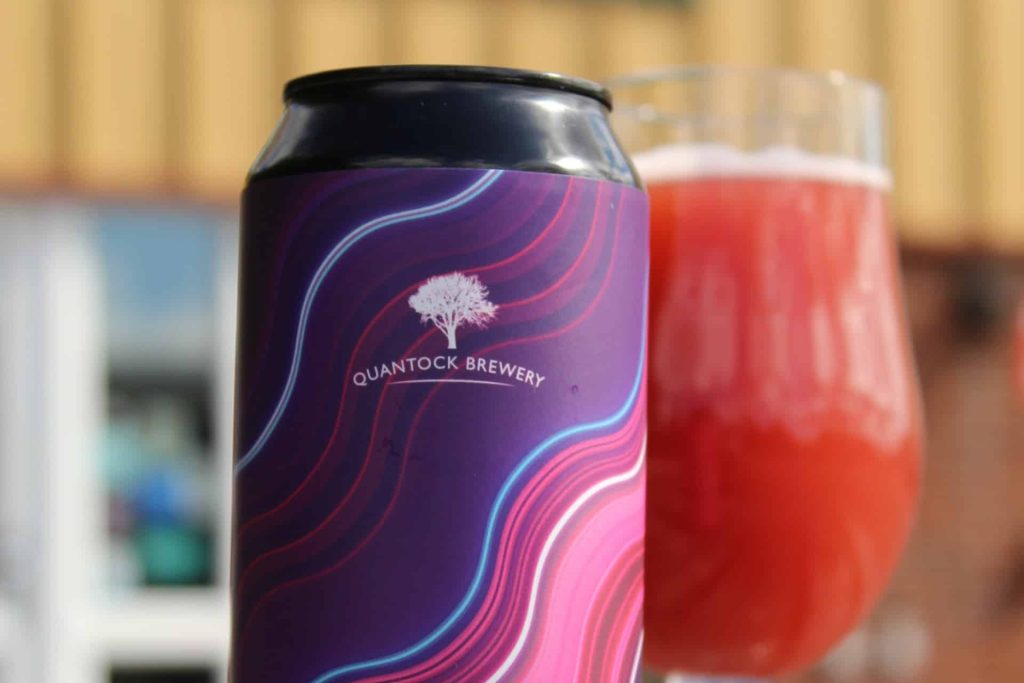
The Role of Creativity in Beer Labelling
When it comes to beer labelling, countless standout examples showcase the power of creativity. Examples such as those used for the Kelchner bottle label designs. The effectiveness of the storytelling in these hand-drawn illustrated labels by for 4Ts Brewery coupled with the humorous beer names – occasionally using quotes from disgruntled customers – are quite impressive.
Another great example of a brewery using illustrations is the core range from Loch Lomond Brewery utilising the colourful vector imagery that stands out on the shelves.
Yet another standout example is the labels from the Somerset-based Quantock Brewery. While their core range focuses on gradients, their small-batch beers give it the beans in drawing in the eye with vibrant and eccentric patterns or optical illusions which befit the beers.
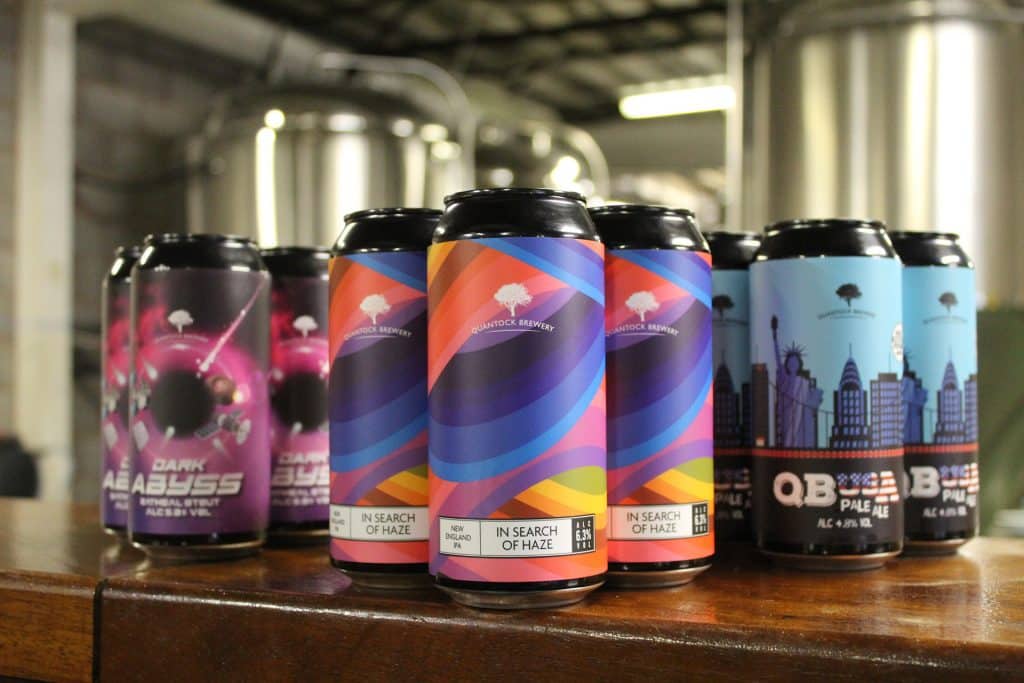
These examples demonstrate how breweries are using creativity to create labels that not only stand out on the shelf but also reflect the personality and character of the beer within. By pushing the boundaries of traditional beer branding, breweries can captivate consumers and leave a lasting impression.
How Breweries Use Beer Labelling to Differentiate Themselves
In a crowded market, breweries need to find ways to differentiate themselves and stand out from the competition. Beer labelling provides a unique opportunity for breweries to showcase their creativity and create a distinctive brand identity. By investing in well-designed and visually appealing labels, breweries can capture the attention of consumers and make a memorable impression.
One way breweries differentiate themselves through labelling is by embracing a specific theme or aesthetic. Some breweries opt for a minimalist and clean design, while others embrace a more whimsical and artistic approach. By choosing a distinct style, breweries can carve out a niche and attract consumers who resonate with their visual identity.
Breweries also differentiate themselves through the use of unique materials and printing techniques. Some breweries opt for embossed labels, while others use foil stamping or textured paper to create a tactile experience. These subtle details add a touch of luxury and craftsmanship to the packaging, making the beer feel more special and premium.
Additionally, breweries differentiate themselves through the use of innovative label designs. Some breweries incorporate interactive elements, such as augmented reality or QR codes, that allow consumers to engage with the brand in a new and exciting way. These interactive labels create a memorable experience and leave a lasting impression.
The Psychology Behind Effective Beer Labelling
Beer labelling is not just about aesthetics; it also taps into the psychology of consumer behaviour. The colours, typography, and imagery used in beer labels can evoke specific emotions and influence purchasing decisions. Understanding the psychology behind effective beer labelling can help breweries create labels that resonate with consumers on a deeper level.
Colour plays a crucial role in beer labelling. Different colours evoke different emotions and associations. For example, warm colours like red and orange can create a sense of excitement and energy, while cool colours like blue and green can evoke a feeling of calm and relaxation. Breweries can use these colour associations to evoke specific emotions that align with the beer’s flavour profile or brand identity.
Typography is another important element of beer labelling. The style, size, and placement of the text can convey different messages and create a specific brand personality. Bold and playful typography can communicate a sense of fun and adventure, while elegant and refined typography can convey sophistication and craftsmanship. Breweries can use typography to reinforce their brand identity and create a cohesive visual language.
Imagery and symbols also play a role in effective beer labelling. Certain symbols and images can evoke specific associations and create a sense of familiarity or nostalgia. For example, images of nature and the outdoors can evoke a feeling of freshness and purity, while vintage-inspired illustrations can create a sense of tradition and heritage. Breweries can use these visual cues to communicate the beer’s story and connect with consumers on an emotional level.
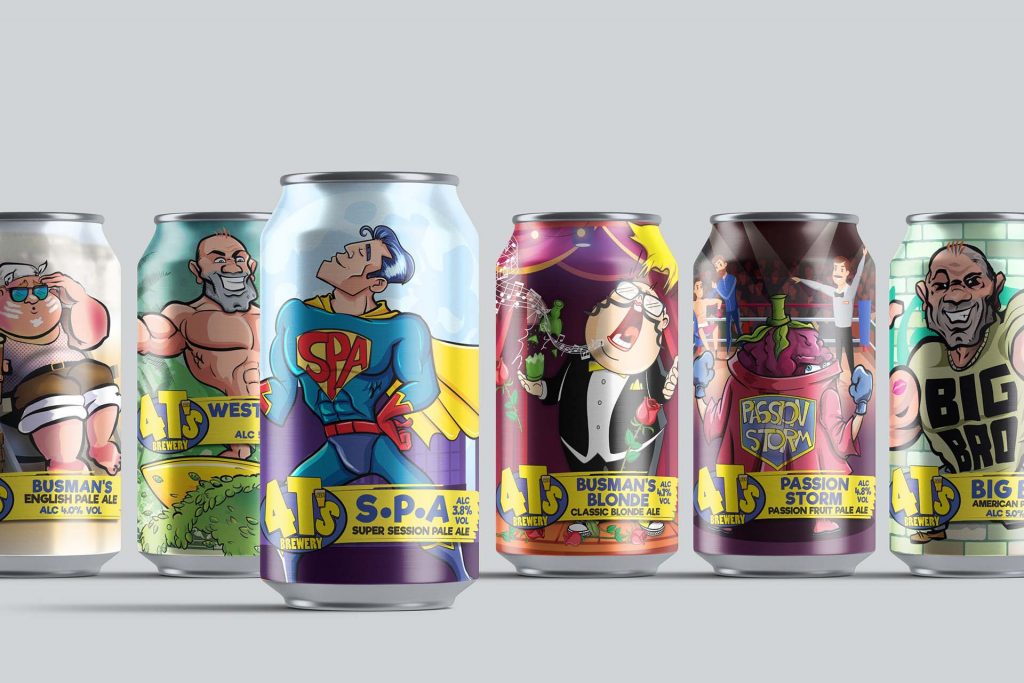
Beer Labelling as a Marketing Tool
Beer labelling is not just about creativity and visually appealing designs; it’s also a powerful marketing tool. A well-designed label can attract attention, spark curiosity, and ultimately drive sales. Breweries can leverage beer labelling as a marketing tool in several ways.
Firstly, beer labels can act as a form of advertisement. When a consumer sees an interesting label on a store shelf or in a bar, it creates an opportunity for the brewery to capture their attention and introduce them to their brand. A visually appealing label can entice consumers to try a new beer, even if they have never heard of the brewery before.
Secondly, beer labels can help breweries build brand recognition and loyalty. When consumers consistently see a brewery’s label on the shelf or in advertisements, it creates a sense of familiarity and trust. Over time, consumers may develop a preference for a particular brewery based on their positive experiences with their beers and labels.
Lastly, beer labels can be used to create a sense of anticipation and excitement around new beer releases. Breweries can create limited-edition labels or collaborate with artists and designers to create collectable labels that generate buzz among consumers. These special labels can create a sense of exclusivity and encourage consumers to seek out the beer before it’s gone.
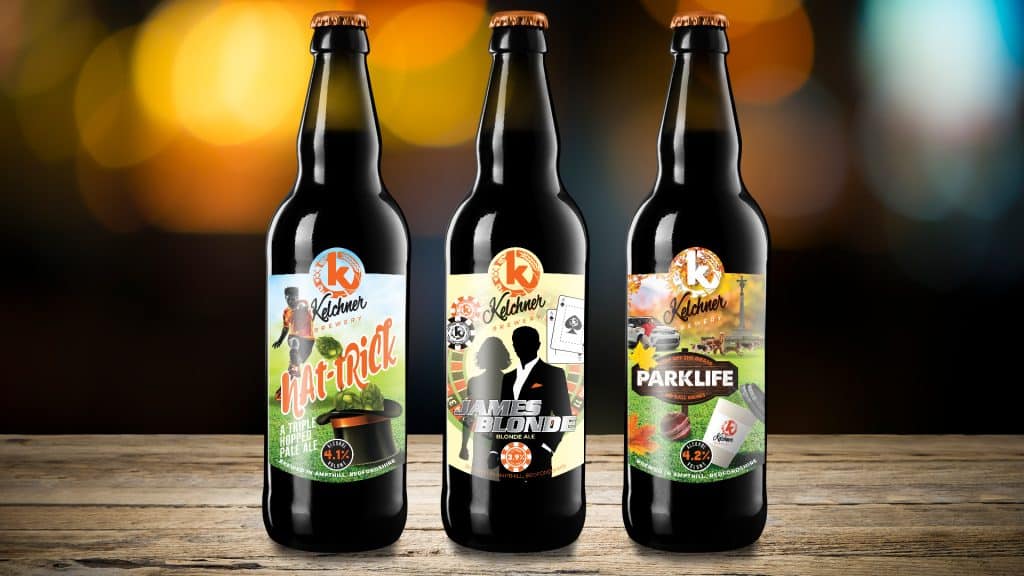
Beer Labelling Trends to Watch
Beer labelling, like any other form of design, is subject to trends that come and go. Staying up to date with the latest beer labelling trends can help breweries create labels that feel fresh and relevant. Here are a few creative beer labelling trends to watch:
- Minimalist Design: Minimalism continues to be a popular trend in beer labelling. Clean lines, simple typography, and a focus on negative space create a modern and sophisticated look.
- Hand-Drawn Illustrations: Hand-drawn illustrations add a sense of craftsmanship and authenticity to beer labels. These illustrations can range from intricate and detailed to playful and whimsical, depending on the brewery’s brand identity.
- Geometric Patterns: Geometric patterns are a great way to add visual interest to beer labels. Bold and abstract shapes create a dynamic and eye-catching design that stands out on the shelf.
- Vintage-Inspired Labels: Vintage-inspired labels evoke a sense of nostalgia and tradition. These labels often feature retro typography, weathered textures, and classic imagery that harken back to a bygone era.
- Sustainability and Eco-Friendly Packaging: As consumers become more environmentally conscious, breweries are embracing sustainable and eco-friendly packaging. Labels made from recycled materials, biodegradable inks, and minimalist designs that reduce waste are becoming increasingly popular.

Tips for Designing a Memorable Beer Label
Designing a memorable beer label is no easy task, but with the right approach, breweries can create labels that capture the essence of their beer and resonate with consumers. Here are a few tips for designing a memorable beer label:
- Know your audience: Understand who your target audience is and what appeals to them. Research their preferences, tastes, and purchasing habits to create a label that speaks directly to them.
- Tell a story: Use your label to tell the story behind your beer. Whether it’s the inspiration, the brewing process, or the brewery’s history, storytelling adds depth and meaning to your label and creates a connection with consumers. (links to George Samuel case study)
- Stand out: Don’t be afraid to take risks and push the boundaries of traditional beer labelling. Create a label that stands out on the shelf and captures attention. Be bold, be different, and be memorable.
- Keep it simple: While creativity is important, it’s also essential to keep your label design simple and easy to read. Avoid clutter and unnecessary details that can distract from the main message.
- Collaborate with artists and designers: Consider working with talented artists and designers who can bring your vision to life. Collaborating with professionals can help you create a label that is visually stunning and aligns with your brand identity.
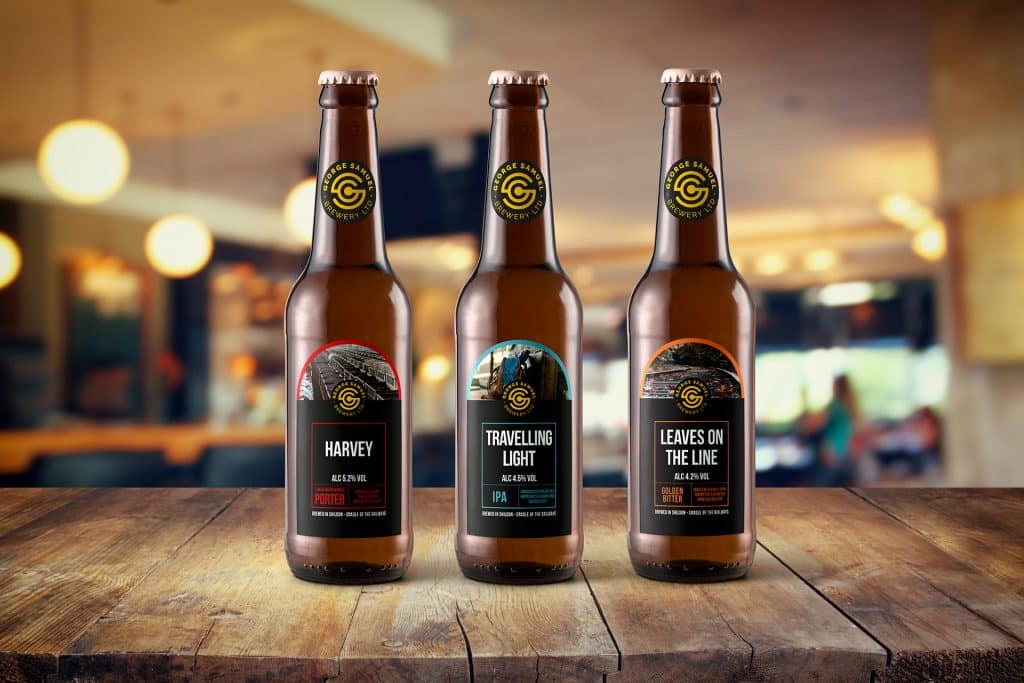
Conclusion
The art of beer labelling has come a long way, transforming from simple and utilitarian designs to intricate and visually stunning labels. Breweries around the globe are embracing creativity and using their labels as a canvas to tell their unique stories and stand out from the competition. Beer labelling is no longer just about aesthetics; it’s a powerful marketing tool that can attract attention, evoke emotions, and create a lasting impression. By understanding the importance of beer labelling, the evolution of this art form, and the role of creativity, breweries can create labels that not only capture the essence of their beer but also resonate with consumers on a deeper level. So next time you reach for a cold one, take a moment to appreciate the artistry behind the label and the story it tells. Cheers to the art of beer labelling!
